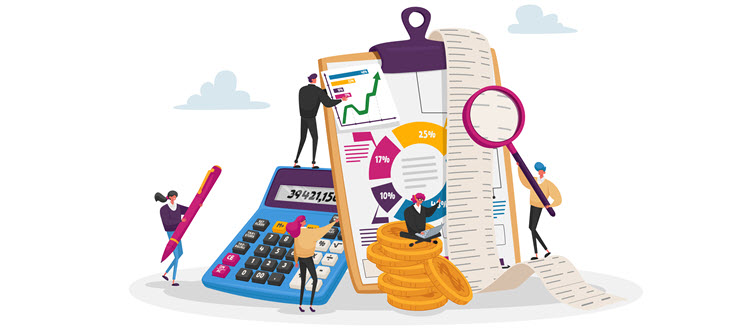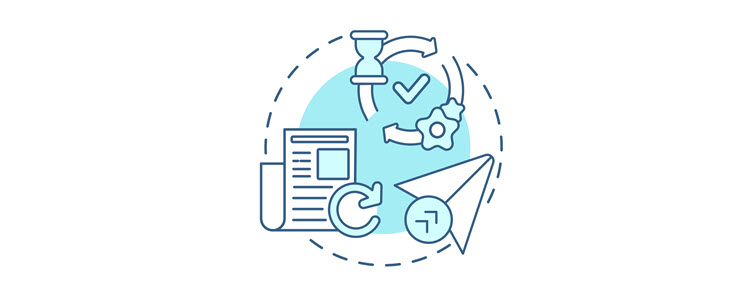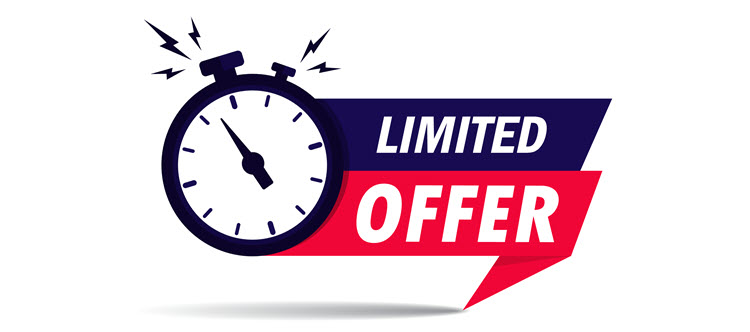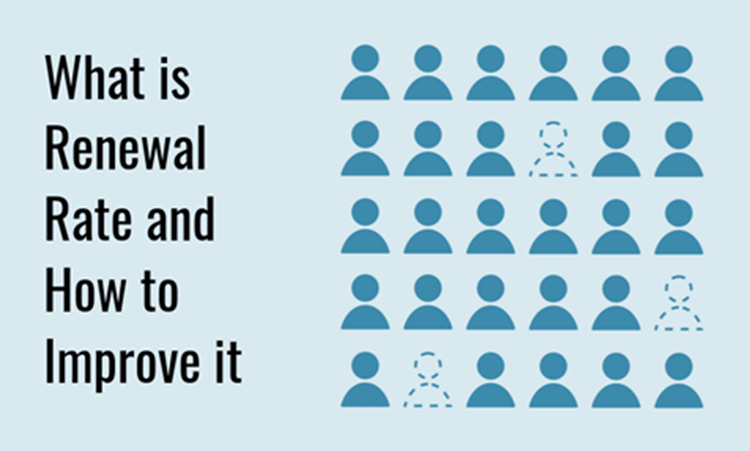In subscription-based commerce, a high renewal rate is a sign of financial stability and good business health. Improving renewal rate is therefore something all subscription businesses should strive for.
Chasing a high renewal rate is not a new business tactic. Businesses selling recurring services, such as internet service providers and mobile operators, have been pursuing it for years. But with the expansion of the X-as-a-Service sector, many new businesses have made improving their recurring revenue a top priority.
To learn how to calculate and improve subscription renewal rates, check out our short primer in the paragraphs below.
What is a Renewal Rate?

Renewal rate is the number of customers that have renewed their subscription after the subscription period has ended.
Renewal rate is the opposite of churn. Churning customers are those that don’t renew their subscription, while recurring customers are those that do.
Think about renewal rate in terms of revenue. In this sense, renewal rate is the percentage of revenue earned through renewals.
How To Calculate Renewal Rate
There are multiple methods for calculating renewal rate. We will explain the two most common: the customer count method and the revenue method.

Customer Count Method
The customer count method determines how many customers renew after their subscription expires out of the total number of customers up for renewal after a given subscription period. The customer count method for calculating renewal rate is:
R = renewal rate
CR = number of customers that renew
TR = total number of customers up for renewal
R = (CR ÷ TR) × 100
Let's illustrate with a simple example. Say you have 100 customers up for renewal, and 70 decide to extend their subscription. After substituting the numbers into the formula, we get:
R = (70 ÷ 100) × 100 = 70%
The customer count method is useful for calculating renewal rate in scenarios where each individual customer generates an equal amount of value. For instance, if a company is selling a SaaS app with a fixed subscription price, the number of customers that renew their subscription directly determines renewal revenue.
Revenue Method
The revenue method determines how much revenue is gained through renewals, irrespective of how many customers actually renew. The revenue method for calculating renewal rates uses a formula similar to the customer count method:
R = renewal rate
Rrev = revenue generate through renewals
Trev = total revenue up for renewal
R = (Rrev ÷ Trev) × 100
Again, lets illustrate with an example. Suppose you’re earning $10,000 in revenue through subscriptions. Then suppose some customers cancel their subscription, so now you’re earning $8,000 in revenue from those that did renew. After substituting the numbers into the formula, we get:
R = (8,000 ÷ 10,000) × 100 = 80%
The revenue method is useful for calculating renewal rate in scenarios where the revenue generated by each customer can vary. For example, if a company is selling consulting services with different subscription tiers, some customers will be more valuable than others based on their subscription level.
What Is a Good Customer Renewal Rate?
The optimal customer renewal rate depends on which method of calculation you use.
- The Customer Count Method. A good rule of thumb is that if the customer count renewal rate is over 80%, a business is doing well. A rate of 100% means that every customer has renewed their subscription. Customer count renewal rate can’t go over 100%, so the closer you are to this percentage, the better off you are.
- The Revenue Renewal Method. A revenue renewal rate of above 80% indicates that a business is doing well. In some scenarios, losing a single high-value customer can bring renewal revenue below 50%, while losing 10 low-value ones might keep it above 80%. If revenue earned through subscription upgrades and new customer acquisition is higher than revenue lost due to churn, the revenue renewal rate can be over 100%.
Subscription Renewal Rates Best Practices

Below is a list of business practices that improve subscription renewal rates:
1. Get to Know Your Customer
Often the easiest way to drive renewals is to give customers more of what they already like. To do this, you have to understand which products, services, and content matter to the customers.
There are two ways to gather information about your customers. One is by looking at data, including demographics data (age, sex, geographic location), purchasing history data, website activity data, and anything else available.
The other way is to ask the customer directly. Use survey emails, social media polls, look at customer reviews and support tickets, or even talk with people at conventions and other events.
2. Target Customers with Customized Approach
Another way to generate renewals is to go after each customer individually. This kind of approach is especially powerful if the customer base is made up of a small number of high-value customers.
The key here is to create a unique value proposition for each customer. For some customers, the top priority is having 24/7 customer support. For others, it is cloud-based deployment or integration with other services they’re using.
Understanding these preferences helps create offers that highlight the features a customer cares about the most.
3. Measure and Improve Customer Success

Customer success is the practice of helping customers leverage the full benefits of a subscription service. The greater the value the customer extracts from a service, the more likely they are to renew their subscription.
Education is vital for customer success. To help customers get the most out of your service, educate them about its features, benefits, areas of application, and common use case scenarios.
Content plays a crucial role in customer success. Content such as knowledge base articles, guides, tutorials, and infographics is reusable, easy to distribute, and provides extra value to customers completely free of charge.
Customer success content is also an ideal target for customization. For example, send each customer content based on their unique needs.
4. Eliminate Payment Failures
Sometimes, customer churn is an unintended result of outside circumstances, such as failures in payment processing. These often occur as a result of expired payment cards. In such scenarios, the customer is often unaware that their renewal was unsuccessful and would otherwise continue using the service.
Payment processing failures can be addressed by using churn reduction software. Apps like ProfitWell Retain use automated recovery emails, landing pages, annual upgrade options, and in-app messages to help customers resolve payment processing issues conveniently.
Note: Offering discounts is a good incentive for long time customers. Learn everything you need to know about Loyalty Discounts.
5. Increase Product Stickiness
Product stickiness is the degree to which a product easily becomes a part of the customer’s routine. Once a customer becomes reliant on a product, they have a strong incentive to continue buying and using the product, leading to more renewals.
To make a subscription product more sticky, constantly work on upgrading features that the customer can’t do without. For instance, if customers rely on an SEO analytics tool that comes bundled without a SaaS digital marketing solution, improving this tool is a great way to make the product stickier.
Note: Learn also about customer stickiness in our blog What Is Customer Stickiness and How to Increase It.
6. Use Incremental Promotions

Incremental promotions are a simple but effective method for improving renewal rate. Target customers with increasingly enticing promotional offers to nudge them into subscribing.
For instance, if a customer is up for renewal, send them an email offering a 10% discount if they renew their subscription right away. Customers that were intending to renew anyway will appreciate the extra value, while those that were on the fence might reconsider. Additionally, send an email with a deeper discount of 20% to those that didn’t respond to the initial offer.
Instead of discounts, you can incrementally offer bonus features, content, customer support options, and anything else that improves customer experience.
7. Create a Customer Renewal Playbook
Once you’ve decided which renewal tactics to pursue, codify them in a customer renewal playbook. The purpose of this document is to create a standardized procedure for improving renewals and being more consistent about generating them.
A renewal playbook describes all relevant aspects of the renewal process. This includes procedures for:
- Reaching out to customers up for renewal (content to be used, tone of the messaging, communication channels, timing, etc.)
- Tracking customer satisfaction and success (defining relevant metrics, analytic tools to be used, etc.)
- Incentivizing sales, marketing, and customer service teams to pursue renewals (setting performance targets, creating renewal guidelines, etc.)
If you are considering going into subscription industry, check out our guide on How to Start a Subscription Business.
Conclusion
Maintaining a high renewal rate is a major challenge for subscription-based businesses. The business practices outlined above ensure that renewal rate remains consistently high month after month.
